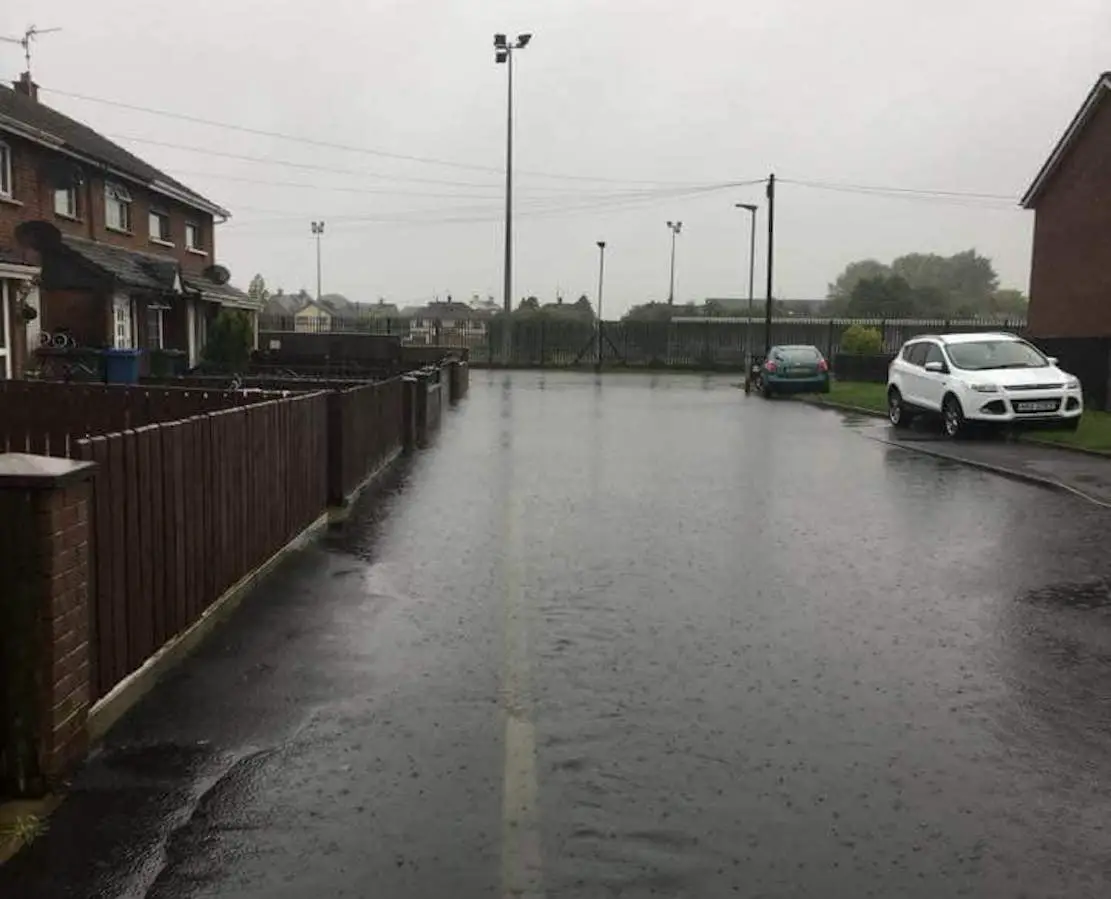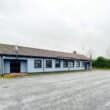
Thirty-seven households were issued with emergency £1,000 payments after their homes and belongings suffered severe damage during recent flash floods.
A further 25 businesses also received advice and assistance from Armagh City, Banbridge and Craigavon Borough Council in the aftermath.
Torrential rains on the last Saturday in July forced the council to put its emergency plan into full swing.
Homes and businesses in Lurgan and Dromore were among the worst affected.
And just last month the council passed a motion calling for inter-agency action to prevent a repeat of such scenes.
The council’s environment committee has been updated on just what happened and how the situation came to be so severe and impact upon such a wide area and so many within the borough.
Council was told how, on Friday, July 27, the Met Office issued two updates relating to weather patterns and rainfall predicted for Saturday.
The first was an initial weekend weather update which described the potential for some “locally heavy and thundery rain” during Saturday morning with “impact on travelling conditions and outdoor activities”.
This update was at an ‘advisory’ level under the threshold for a yellow weather warning.
But a yellow weather warning for heavy rain was later issued by the Met Office during Friday afternoon.
It was assessed as “low likelihood of low impacts with the potential for localised, mostly minor disruption to travel and transport” and an increase in journey times. It said a “small number of individual properties could experience flooding”.
Yet what was to follow was far worse than anyone ever expected.
A council official, updating committee, explained: “This level of warning does not trigger other preparedness measures under the severe weather plan, but individual agencies would have been aware of the warning and have had their own plans in place to deal with an any arising impacts.
“On Saturday, July 28, around midday, after the rain first began, the yellow warning was updated to extend the warning period into the evening, with the warning matrix assessment at a high likelihood of low impacts.
“This included flooding of roads, local transport disruption and the possibility of some limited property flooding more especially where local drainage may be compromised.”
The level predicted suggested totals of between 30mm and 40mm of rain in places through the period of the warning.
But “climatic conditions produced an extremely slow moving band of rain” with more than double that – around 85mm of rain – falling in just four hours!
It was described by the Met Office as “unprecedented”, with the normal rainfall for the whole month of July falling in just four hours.
It was during this time – at 2pm – that the warning was escalated to amber.
By this time parts of the borough were already experiencing severe local impacts with roads and property flooding.
The greatest threat from floods was being experienced in Dromore and Lurgan, the worst in Dromore being at Banbridge Road, Bishopshill, Bridge Street, Holm Terrace, Maple Park, Market Square, Meeting Street and Princes Street, and in Lurgan in Glebe Terrace, Deans Walk and Westwood, and other parts of North Lurgan, Carrick Drive, Union Street and Knockramer Meadows/ Silverwood area.
Local government departments blamed the extreme heavy and torrential band of rain overwhelming the drainage infrastructure of storm and sewage drains, road and pathway gullies and small watercourses.
Following initial reports from councillors to the chief executive Roger Wilson and emergency services coordinator, the emergency plan was activated at 2pm.
Councillors, in their update, were informed: “This enabled the emergency responders and all participating agencies to further asses the risks and potential hazards and direct the deployment of key resources such as drainage pumps and sandbags to the most affected areas.
“Multi-agency engagement also assisted the council in sharing local information on impacts with other agencies such as NIHE, NIFRS and also to be able to response promptly to any request by the lead government department in relation to the ongoing flooding incident.”
In the days which followed, 130 calls were referred to the council from flood incident line and also directly to the environmental health department.
The next day – Sunday – officials visited 20 households in Dromore and Lurgan and assessed damage by flood water. Advice was offered on cleaning up and disinfection, removal of damaged goods, contacting house insurance providers and landlords and good hygiene practice.
Further visits were carried out throughout the following week, to the remainder of other affected households with over 50 homes visited.
Over 120 households were contacted to offer advice and practical assistance.
Damage included internal flooding of living areas, damage to utilities and boilers by flood water resulting in domestic facilities being temporarily out of order.
Those visited were assessed for eligibility for payment under the Department for Communities scheme of emergency financial assistance.
To date, 37 applications have been approved for the £1,000 payment of practical assistance and cheques have been processed by council finance department and collected by those affected.
Advice was also given to around 25 businesses affected by the flooding and assistance provided by council where needed to dispose of flood damaged items.
The environment committee was told that the model generally used in such a debrief involves the emergency responders and agencies meeting along with senior local government officers.
But following the fulll council meeting and passing of a notice of motion last month, discussions will be held with the multi-agency partners on how to involve councillors more in future and explore other ways to prevent anything of this scale ever happening again.





